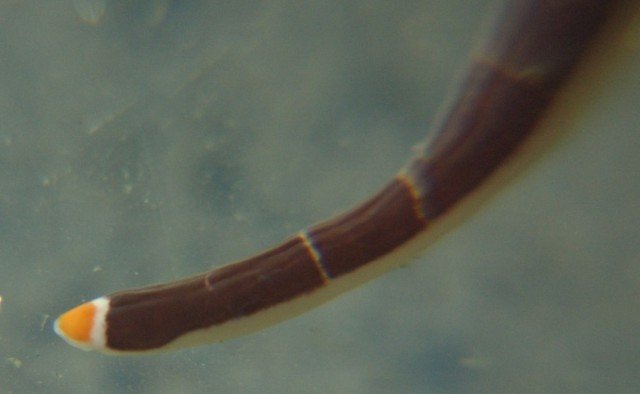
Imagine you’re at the beach during low tide. You notice a slim, colorful worm slinking through the tidal pools, and it piques your curiosity. Ribbon worms are not your typical beach dwellers; they come in various shapes and colors, often resembling long ribbons or delicate threads. Observing them in their natural habitat in the intertidal zone offers a glimpse into the intricate web of life that thrives where land meets sea. Let’s dive deeper into the world of ribbon worms and uncover the joys of spotting them during your next seaside adventure.
What Are Ribbon Worms?
Ribbon worms, scientifically known as *Nemertea*, are a fascinating group of marine worms. They come in various species, with most commonly recognized types being long, slender, and brightly colored. Their bodies can stretch several feet in length, which is pretty impressive for a worm! These creatures have a unique feature called a proboscis, which they use for hunting and feeding. When threatened, some ribbon worms can even regenerate lost body parts, which is a neat survival trick.
These worms are typically found in intertidal zones, where they burrow into the sand or hide among rocks and seaweed. It’s their ability to thrive in changing environments that makes them particularly interesting. The intertidal zone, the area between high and low tide, is a bustling ecosystem filled with various organisms, and ribbon worms play a vital role in it all.
Where Can You Find Ribbon Worms?
If you’re eager to spot ribbon worms, the best places are rocky shores or sandy beaches during low tide. Look in tidal pools or under rocks, as they like to hide from predators. Being part of the ocean means they often stay close to the water, but if you keep your eyes peeled, you’ll spot them weaving in and out of the sandy substrate.
When you’re searching, take a moment to appreciate the entire setting. The sound of the waves, the salty air, and if you’re lucky, you might even spot crabs or sea stars nearby—both common intertidal inhabitants. It’s almost like a treasure hunt. You never know what you’ll find when you start looking closely.
How to Observe Ribbon Worms Safely
When you’re exploring, it’s essential to approach with care. Ribbon worms are delicate creatures, and handling them roughly can harm them. Here’s how you can observe them safely:
- **Be gentle:** If you find one, try not to grab it with your hands. Instead, use a small container to scoop it up gently—if you want to take a closer look.
- **Keep them moist:** If you collect a ribbon worm, make sure it stays moist. These creatures can dry out quickly, leading to stress or death.
- **Return them carefully:** After you’ve observed, always return them to their original spot. That way, they can continue their role in the ecosystem.
Honoring the environment while observing marine life is key. You’re stepping into their home, so treat it with respect!
Understanding Their Role in the Ecosystem
Ribbon worms have a crucial part in their ecosystem. They are part of the food chain, serving as prey for larger animals like fish and birds. They also help keep the ocean floor healthy by participating in the process of decomposition. As they consume smaller organisms, they contribute to nutrient cycling, which keeps the marine environment thriving.
Here’s the thing: when you observe these creatures, you’re not just watching a worm; you’re witnessing a vital part of a larger system. This interconnectedness reminds us of how important each species is, no matter how small or seemingly insignificant it may appear.
What to Look For When Observing Ribbon Worms
When you’re on the lookout for ribbon worms, there are a few key characteristics to keep in mind:
- **Colors and patterns:** Ribbon worms come in a variety of hues, from vibrant reds and yellows to muted browns and greens. Their colors can often help you identify different species.
- **Body movement:** Watch how they move! Ribbon worms are quite slimy and tend to glide through the sand or water, making them graceful yet slippery.
- **Size and shape:** Depending on the species, they can vary significantly in length and body shape, which can make spotting them more exciting.
Focus your observations on these traits. You might even be able to identify different species based on what you see!
Curiosity and Conservation: Why Observing Ribbon Worms Matters
Observing ribbon worms is not just a fun beach activity; it also fosters a deeper understanding of marine life. The more we learn about creatures like ribbon worms, the more we appreciate the delicate balance of ecosystems. By nurturing curiosity about these organisms, we can become better stewards of our oceans.
Here’s a thought: if everyone took the time to learn about and observe local wildlife, imagine how much more we’d protect their habitats. Education is a powerful tool that can inspire action and conservation efforts.
Tips for First-Time Observers
If you’re new to observing ribbon worms, here are a few handy tips to enhance your experience:
- **Bring a field guide:** A simple guidebook on marine life can help you identify different species while you explore.
- **Capture moments:** Take pictures! Documenting your finds can help you remember what you saw and share it with friends.
- **Join a local group:** Consider connecting with local marine biology groups or nature clubs. They often host beach clean-ups and educational events, which can deepen your understanding.
By arming yourself with knowledge and a bit of patience, you’ll become a more successful observer of ribbon worms.
In conclusion, exploring the world of ribbon worms in intertidal zones can be a rewarding experience. It opens up a unique glimpse into the unseen life lurking beneath the waves. With a little curiosity, respect, and mindfulness, you can enjoy observing these fascinating creatures while contributing to the health of their environment. Happy worm watching!
